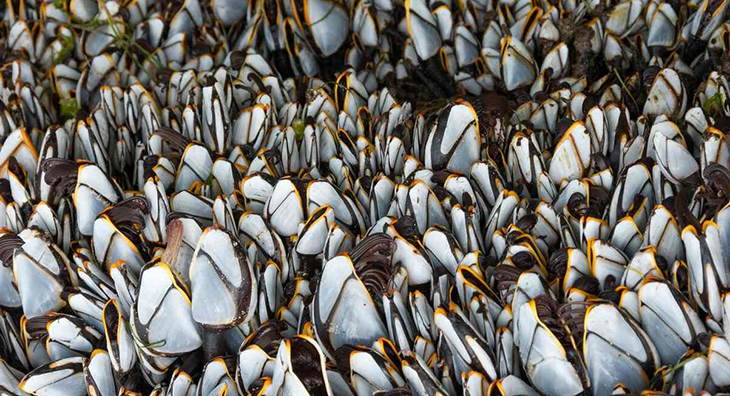
In the ongoing mystery of the disappearance of Malaysian Airlines Flight MH370 back in March 2014, scientists have turned to an unexpected source for potential clues. Despite how bizarre as it may seem, they are looking into the inconspicuous marine limpet.
While the search for any traces of the missing flight in the vast Indian Ocean has yielded little to minimal results, researchers from the University of South Florida are pioneering a method that could shed light on one of the most significant aviation mysteries of our time.
The key to this novel approach lies in the shells of barnacles, a type of marine organism that attaches itself to various surfaces, including debris floating in the ocean.
Researchers at the University of South Florida have devised a method to extract ocean temperature records from these barnacle shells, which could ultimately lead to the reconstruction of the drift path of the debris, and potentially, the aircraft itself.
The significance of this breakthrough lies in the potential to solve a mystery that has baffled investigators for years. The official search for Flight MH370, which was enroute from Kuala Lumpur to Beijing when it disappeared, was officially called off in January 2017. Even a private effort launched a year later yielded no trace of the aircraft. However, the research team’s innovative approach offers renewed hope for answers.
To better understand how this works, it’s essential to recognize that barnacles, like many shelled marine invertebrates, grow their shells daily, much like tree rings. Each layer of these shells contains a chemical composition that reflects the temperature of the surrounding water at the time the layer was formed. This means that by analyzing these shell layers, scientists can reconstruct historical water temperature data.
The breakthrough came when University of South Florida geoscientist Associate Professor Gregory Herbert, who happens to be an expert in shelled marine invertebrates, began to extract ocean temperature records from barnacle shells. He got the idea when he saw photos of the plane debris that had washed ashore on Reunion Island off the coast of Africa a year after the plane crashed.
“The flaperon was covered in barnacles and as soon as I saw that, I immediately began sending emails to the search investigators because I knew the geochemistry of their shells could provide clues to the crash location,” said Professor Herbert.
This method, previously unexplored in this context, showed promise. Herbert and his team conducted growth experiments with live barnacles, successfully unlocking temperature records from their shells.
In a study published in the journal AGU Advances, the researchers applied this method to small barnacles found on MH370 debris. By collaborating with barnacle experts and oceanographers from the National University of Ireland Galway, they combined the barnacles’ water temperature records with oceanographic modeling, leading to a partial drift reconstruction.
The research found that the debris, including barnacle-encrusted pieces, followed a drift path that covered 120,000 square kilometers – or 46,000 square miles – around the so-called “Seventh Arc.” This arc, which happens to be an area of interest in the search for MH370, covers a vast expanse of ocean, including thousands of miles along a north-south corridor. Investigators have long believed that the plane may have glided along this arc after running out of fuel.
Dr. Herbert said, “Sadly, the largest and oldest barnacles have not yet been made available for research but with this study, we’ve proven this method can be applied to a barnacle that colonized on the debris shortly after the crash to reconstruct a complete drift path back to the crash origin.”
Crucially, ocean temperature can vary significantly along the Seventh Arc, making it challenging to pinpoint the aircraft’s location. However, Professor Herbert believes that his method could provide the precision needed to determine the plane’s whereabouts.
“Even if the plane is not on the arc, studying the oldest and largest barnacles can still narrow down the areas to search in the Indian Ocean,” he adds.
According to Dr. Nassar Al-Qattan, “The plane disappeared more than nine years ago, and we all worked aiming to introduce a new approach to help resume the search, suspended in January 2017, which might help bring some closure to the tens of families of those on the missing plane.”
“Knowing the tragic story behind the mystery motivated everyone involved in this project to get the data and have this work published,” he adds.
What are your thoughts? Please comment below and share this news!
True Activist / Report a typo


